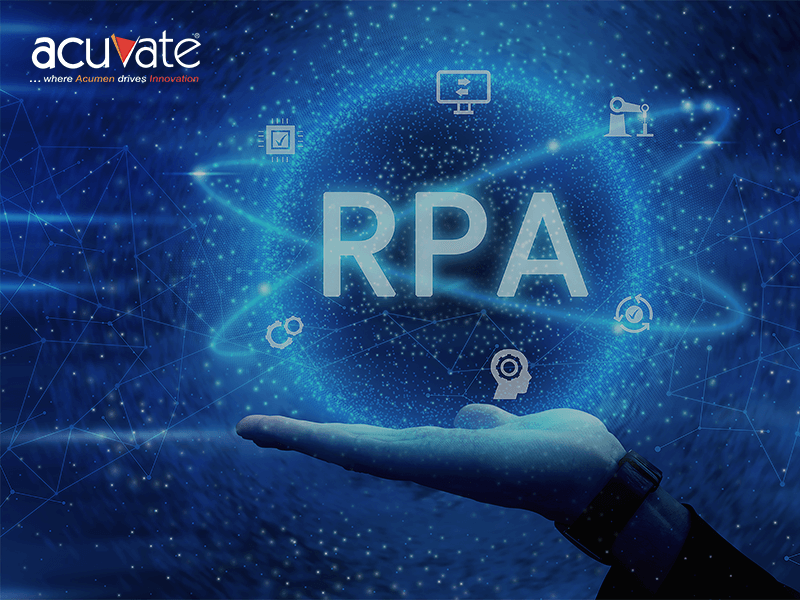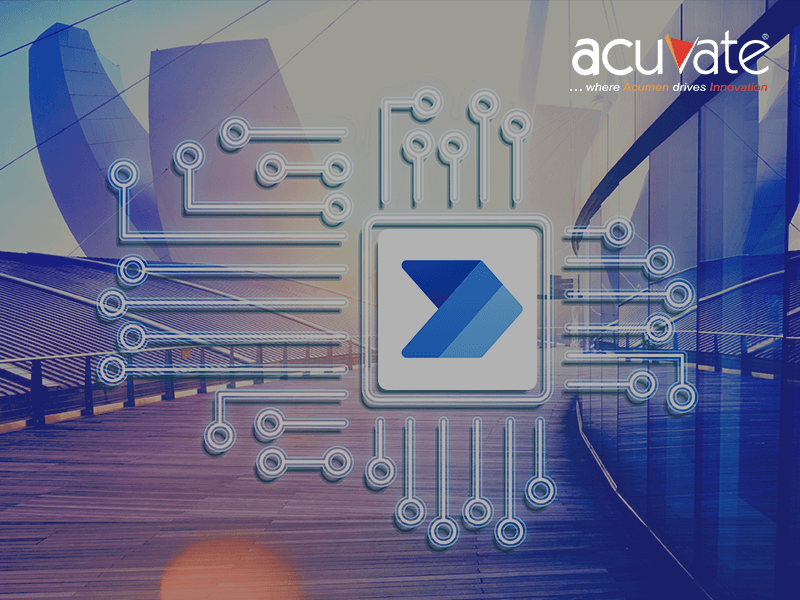We are currently seeing RPA gain quick ground across several industries, be it accounting, finance, healthcare, CPG or insurance. Companies are embarking on combining RPA with traditional Business Process Management (BPM), machine learning, chatbots and NLP to:
- Automate back-office processing and highly manual task
- Reduce operating costs of complex repetitive task through automation
- Improve employee productivity
- Make workflows more streamlined.
Gartner estimates RPA software spending will reach $2.4 billion in total revenue by 2022 and 60 percent of organizations with a revenue of more than $1 billion will have deployed RPA tools by the end of the year. RPA’s reach and penetration in the market will grow globally as more enterprises acknowledge the potential of automating processes to transform business and see it as an effective alternative to the existing legacy systems. Software giants like IBM, Microsoft and SAP, are proactively venturing into RPA and are partnering with or acquiring RPA software providers to leverage the technology in their customer bases. In this article, we talk about what to expect out of RPA’s future and the RPA trends to watch out for in 2020, and beyond.
RPA Trends to Watch Out For
1. Greater adoption of RPA across industries
Hitherto, the biggest adopters of RPA have been banks, insurance companies, telecommunication industry and utility companies due to extensive legacy systems used in their operations and RPA has been a game changing technology for these businesses.
However, with the RPA scaling up in revenue and capabilities, more and more industries like manufacturing, oil and gas, banking and telecommunication will meticulously adopt RPA. RPA is becoming an integral part of and a high priority for companies all over the world.
2. Emergence of intelligent digital workforce
According to the survey from KPMG in 2018 with top executives across the globe, 32% of industry leaders expect to increase RPA investment by 20 percent or more and two-thirds of respondents believe they can confidently manage to scale up intelligent automation projects and initiatives.
The RPA industry will undergo a transformation as automation and digital workers assume the roles in repetitive and high-volume business functions, relieving human workers to engage in more value-adding activities that demand human cognition.
3. Transforming human roles in organisations
Contrary to the apprehension that RPA will negatively affect employment, future trends suggest a concerted collaboration between machines and humans in many areas, leading to enhancement in the nature of jobs and creation of job opportunities. This will bring about a rise in demand for RPA and process experts to improve user interface and solve complex business problems.
4. RPA bots as tools for risk management and security
RPA will become a vital part of information security strategies as they can help reduce the risk of human error in security management systems. With RPA being increasingly coupled with artificial intelligence and cognitive technologies, automating processes in information security can mitigate the risks that arise due to human involvement as these technologies can efficiently execute tasks that are heavy with data.
This greatly reduces the security risks and saves time for companies, allowing human workers to focus on activities that require human cognition. Organisations will begin to deploy intelligent bots for securing valuable assets and eliminate potential internal data leaks that pose a great threat to organisations.
5. Increased collaborations
As RPA pervades into organizations, new levels of efficiency and productivity will be seen in job roles from entry-level to C-suite. Automation will demand concerted efforts by both Chief Human Resources Officers (CHRO) and Chief Information Officers (CIO) as organizations try to synergize human and digital workers. Although cognitive automation has immense benefits for business performance, to fully redeem the value of the technology, organizations have to take a people-first approach, with central objectives of restructuring roles and responsibilities and creating new jobs
6. Improved ways to measure RPA’s value
As many organizations reach maturity in RPA implementation, their proven results can be leveraged to derive meaningful methods to measure the impact of RPA. Some of the key metrics that reflect RPA’s value are
- Increase in Productivity
- Improvement in service quality and delivery
- Faster innovation and Opportunity Generation
- Transformation in Operations
- Improved employee experience
7. RPA will be more focused on strategic use cases
Organizations will restructure their processes, technologies and framework to accommodate RPA and will adopt a strategic approach to implement end-to-end automation and optimize workflows. Enterprises will explore opportunities of automating complex activities like Document validation and extraction, autonomous invoice processing and fraud detection that deliver the most value and best align with their business goals.
8. RPA prices will reduce
Gartner predicts that organizations will see price reductions in generic RPA tools, which are driven by multiple new vendors. The dip in pricing of RPA is attributed to the following factors
- Proliferation of cloud-based subscription offerings.
- New entrants and increased numbers of systems integrators will drive aggressive pricing strategies leading to reduction in RPA’s prices.
- Increase in ROI and drop in average price-per-seat due to greater involvement of RPA in industries.
9. RPA will enable hyper-automation
Incorporating artificial intelligence and machine learning in RPA has led to the inception of Intelligent Automation, the benefits of which are widely recognised among organisations across the globe. The key interest of hyper-automation in RPA is to understand the span of automation mechanisms and how these technologies can be synergistically used to augment automation technology to handle complex use cases.
Chatbot and RPA integration has been a prominent part of the new wave of intelligent automation. With this integration, chatbots can trigger RPA to perform (rules-based) tasks upon a user’s natural language command, without directing it to a human agent. Chatbots will also be able to process complex user requests at scale by integrating with RPA.
10. RPA will become more intelligent
RPA was initially devised to automate repetitive tasks like text mining of insurance and medical claim forms, invoices, purchase orders, and emails. The earliest forms of RPA limited its emphasis on simple operations, that lie within the purview of the three fives of automation: fewer than five decisions, fewer than 500 clicks, and fewer than five apps accessed.
RPA has come leaps and bounds in its capabilities since its first conception and RPA’s features are getting smarter with abilities to make complex decisions on training effectively, which has been a catalyst to develop unattended robots.
Conclusion
This prognosis is corroborated by initiatives taken by organisations to link AI projects to their KPIs such as revenue, cost reduction and customer satisfaction. Intelligent automations will be the course of RPA in the future which will be powered by artificial intelligence, cognitive technologies and chatbots.
RPA is positioned to gain versatility in automating several processes across departments in an organisation and is expected to be predominantly employed on the customer front and external processes.
If you’re planning to implement RPA in your organization, please feel free to get in touch with one of our RPA experts for a personalized consultation.



